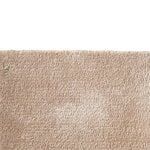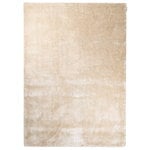Kvadrat’s Bambusa is an elegant and sumptuous rug made of bamboo. Designed by Ulf Moritz and Felix Diener, the tufted rug features around 2 million short bamboo yarns per square meter, which gives it a silky soft texture and a beautiful sheen. Due to its material, Bambusa is antistatic, antibacterial, non-allergenic, highly sound absorbent and helps to regulate the humidity level of the space. What’s more, the rug ages with grace and will develop a unique patina over time. Bambusa is made in Scotland.



Bambusa rug, 1902
Kvadrat
Description
Kvadrat’s Bambusa is an elegant and sumptuous rug made of bamboo. Designed by Ulf Moritz and Felix Diener, the tufted rug features around 2 million short bamboo yarns per square meter, which gives it a silky soft texture and a beautiful sheen. Due to its material, Bambusa is antistatic, antibacterial, non-allergenic, highly sound absorbent and helps to regulate the humidity level of the space. What’s more, the rug ages with grace and will develop a unique patina over time. Bambusa is made in Scotland.
Product details (6)
- Material
- 100% bamboo viscose
- Colour
- Beige
- Length
- 200 cm
- Width
- 140 cm
- Measurement details
- Length & width: +/-2 %
- Yarn height
- 1.2 cm
- Product ID
Designer
Ulf Moritz is a German designer who specializes in textile design and finds his inspiration from both, the functional Bauhaus movement as well as voluptuous luxury. Moritz opened his own studio in Amsterdam in 1970, and has done a long career designing fabrics, rugs, wallpapers, etc. In 2004 Moritz was given the valued British award “Honorary Royal Designer for Industry”.
View all productsReviews (0)
Sustainability
The Product Sustainability Framework, our criteria of sustainable design, helps you find the most sustainable products in our selection. Read below which sustainability criteria this product has met.
Working conditions & labour 9/9
-
Equal opportunities for all employees
-
Commitment to UN Global Compact, fair compensation for all employees
-
Corporate responsibility requirements defined and communicated for suppliers
-
Systematic work for improved inclusion and well-being in the workplace
-
Transparent supply chain
-
Suppliers' compliance to a code of conduct ensured
-
Direct suppliers audited and certified
-
Compliance to the UN Guiding Principles on Business and Human Rights ensured in the supply chain
-
Support for community involvement in the supply chain
Eco-friendly production 9/9
-
Fair and resource-wise water-use in production
-
No incineration or landfilling of returned items
-
No use of endangered species as materials
-
No direct environmental emissions or waste (excl. GHGs) from production
-
The sustainability of direct suppliers' production is addressed and monitored
-
Production and material sourcing that respect biodiversity, animal rights, and natural ecosystems
-
Material-efficient and ecological packaging
-
Positive impact on nature’s well-being through operations that regenerate natural ecosystems
-
No potentially harmful chemicals used in own production
Climate impact 7/8
-
Company's direct greenhouse gas emissions identified and commitment to reduction
-
Product's carbon impact identified and commitment to reduction
-
Guidance on energy- and eco-efficient use of the product
-
Contribution to climate initiatives beyond the brand’s direct operations
-
Low-carbon or compensated transportation
-
100 % renewable energy in own production and operations
-
Carbon neutral or carbon negative product
-
Carbon footprint of the product calculated and goals set to reduce it
Sustainable materials 6/6
-
Sustainable and long-lasting material choices
-
No harmful or hazardous substances
-
Responsible raw material sourcing and production
-
Materials suited for circularity: monomaterials, recyclable finishings, renewable or recycled contents etc.
-
Ecological materials: natural, biodegradable, recyclable or recycled contents
-
Outstanding materials in terms of innovativeness, responsibility, sustainability and circularity: local production or sourcing, 100 % recycled content, C2C-certification etc.
Circular design 5/5
-
High aesthetic quality promoting long-term use of the product
-
Technically durable product design and material choices
-
Design for enduring life-long quality
-
Design and support for product maintenance, repair and upgradability
-
Innovative circular design solutions: circular service system, resale platform, remanufacturing, collection of used products, etc.





